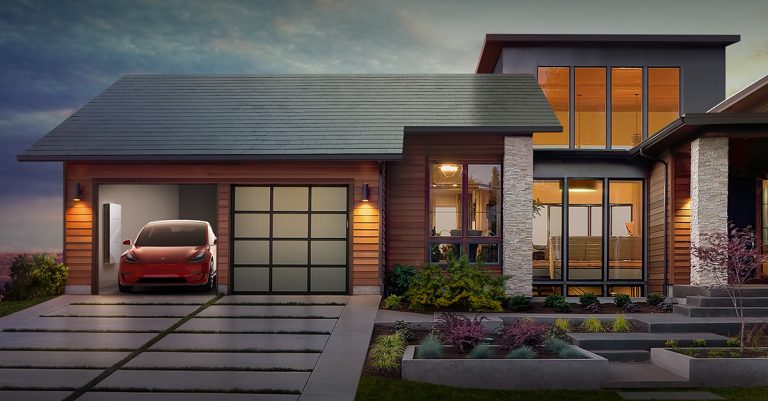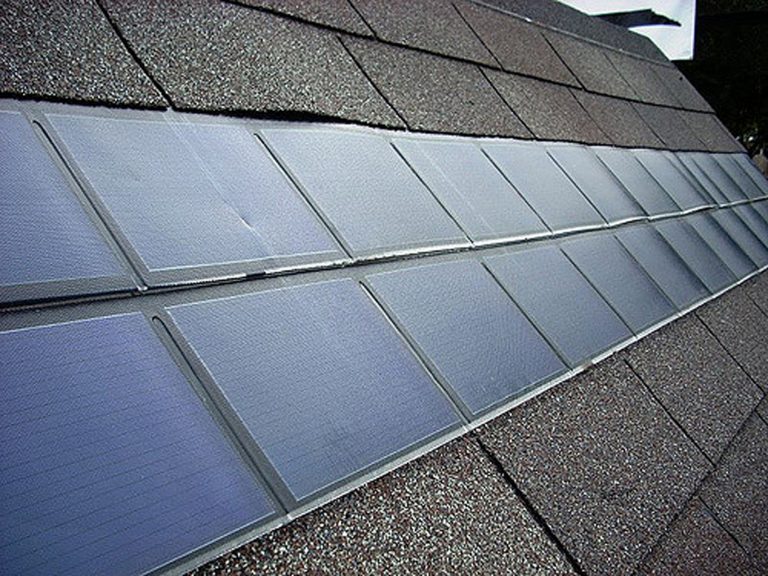
Solar Roofs
Today marks the start of the Energy unit! To kick it off, we had a discussion on whether or not solar roofs (i.e. solar shingles) should be mandated.
Through our class discussion and some of my own research, I learned a lot about solar roof technology. Here’s what I found:
1) A solar roof serves an alternative to a conventional roof. Unlike solar panels, which are placed on top of your roof, solar roofs use solar shingles, which mimic conventional shingles but also produce electricity. Both solar shingles and solar panels convert sunlight into electricity which can be used to power our homes. This power helps us reduce our carbon footprint by reducing our reliance on energy that comes from burning fossil fuels to convert their energy into electricity.
 Solar shingles are like regular shingles, but with solar power!
Solar shingles are like regular shingles, but with solar power!
2) Solar shingles have developed rapidly within the past decade, and are currently very competitive as a roofing option and as a solar power generation option.
As for roofing, the initial cost of a roof that’s around 35% solar tiles will cost about $65 000 compared to an asphalt roof at around $20 000 for US citizens, according to business insider. These initial costs can be quite expensive for some, but there are government incentives to offset that. Also, solar shingles can slash your electricity usage by around 40-60%, reducing your electricity bill by quite a lot. This could add up to around $50-150 a month in Ontario!
As for power generation, solar shingles have become almost just as power competitive as solar panels! Solar shingles generate about 12 watts per square foot, while solar panels generate about 15 watts per square foot. However, solar panels end up having to leave unused space around the edge of the roof for due to fire regulations, making both produce about an equal amount of power.
3) Solar shingles are extremely durable, resisting impacts that would normally shatter regular shingles. Tesla shows a test video for a 5 cm in diameter hailstone travelling 160 km/h on impact for solar and traditional roof tiles. Both traditional roof tiles completely shatter, while the solar glass is unfazed.
I still have a few questions about the value of solar roofs from our in class discussions and my research.
1) What is the difference in solar power from being in different latitudes or regions? Are solar roofs always cost competitive with regular roofs? What would it take to make them cost competitive?
2) What are the environmental impacts of manufacturing solar shingles? While solar power is renewable and very eco-friendly, manufacturing often takes many rare materials. Is the current method of manufacturing solar shingles sustainable?
What’s intriguing about solar roofs is that despite solar panels looking very tacky when placed on your roof, solar shingles look even more stylish than regular shingles. It’s crazy how solar shingles have been engineered to be better than conventional shingles in almost every single way! On Tesla’s website, solar shingles are offered in a unique smooth or textured design, but in the future, there will be tuscan and slate.
After Unit Reflection
Environmental Impact of Energy Technologies
Solar roofs transform the heat from the sun transferred by radiation into electrical energy! In my analysis of solar roofs, I assessed that they had a positive impact on the environment (1st learning point). Solar roofs used wasted space on your roof to generate electricity which could be used by your home. By using solar energy, less energy would be used from fossil fuel sources, which release carbon dioxide into our atmosphere and are bad for the environment. However, while I did find that the use of solar roofs would be good for the environment, I questioned the impact of the construction of solar roofs on the environment, as they would be using elements that might have had negative effects on the environment in their procurement.
I also assessed the social impact of solar roofs, particularly on their viability for the common individual (2nd and 3rd learning point). I found that economically, they were slow to break even, but still within a reasonable range. An estimate of saving you $150 a month but costing about $30 000 more after government incentives would mean that it would take 16 years and 8 months to breakeven. However, solar shingles were much more durable than regular shingles, and the cost to replace regular shingles regularly would make them much more expensive than the long lasting solar shingles.